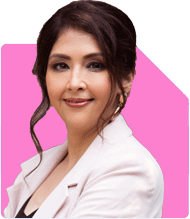Ramalingam Kalirajan |10881 Answers |Ask -Follow
Mutual Funds, Financial Planning Expert - Answered on May 15, 2024
He has an MBA in finance from the University of Madras and is a certified financial planner.
He is the director and chief financial planner at Holistic Investment, a Chennai-based firm that offers financial planning and wealth management advice.... more

I am 45 years old and I have NPS of INR 19000 pr month, PF of INR 34000 per month, PPF of INr 10000 p er month and SSY of 10000 each per month for both of my daughters. I can invest another 20000 per month. Please advise how I can invest to generate the good return?
Assessing Your Current Investments
Before making additional investments, assess your existing portfolio to understand its composition, risk profile, and alignment with your financial objectives. Evaluate the performance of your NPS, PF, PPF, and SSY investments to identify areas for potential enhancement.
Identifying Investment Goals
Define your investment goals and time horizon to guide your asset allocation and investment strategy. Whether it's retirement planning, children's education, wealth accumulation, or other financial objectives, clarity on your goals will inform your investment decisions.
Optimizing Asset Allocation
Diversify your investment portfolio across different asset classes to mitigate risk and optimize returns. Consider allocating your additional 20,000 per month across equity, debt, and other investment avenues based on your risk tolerance and investment horizon.
Equity Investments for Growth
Given your relatively young age and long-term investment horizon, consider allocating a portion of your additional funds to equity investments for potential capital appreciation. Equity mutual funds or exchange-traded funds (ETFs) offer diversified exposure to the stock market and can generate higher returns over the long term.
Debt Instruments for Stability
Balance your portfolio with investments in debt instruments such as fixed deposits, bonds, or debt mutual funds to provide stability and income generation. Debt investments offer lower volatility and serve as a hedge against market downturns, ensuring a more balanced and resilient portfolio.
Exploring Tax-Efficient Options
Maximize tax benefits by investing in tax-efficient instruments such as Equity Linked Savings Schemes (ELSS) for equity exposure, and Public Provident Fund (PPF) for debt allocation. These instruments offer tax deductions under Section 80C of the Income Tax Act, enhancing your overall tax efficiency.
Regular Monitoring and Rebalancing
Regularly review your investment portfolio to assess performance, rebalance asset allocations, and make necessary adjustments based on changing market conditions or personal circumstances. Periodic portfolio reviews ensure your investments remain aligned with your financial goals and risk tolerance.
Seeking Professional Guidance
Consider consulting with a Certified Financial Planner to develop a comprehensive investment plan tailored to your specific needs and goals. A financial advisor can provide personalized guidance, investment recommendations, and ongoing support to optimize your investment portfolio for long-term growth and financial security.
With a strategic approach and diversified portfolio, you're well-positioned to generate good returns and achieve your financial aspirations over the long term.
Best Regards,
K. Ramalingam, MBA, CFP,
Chief Financial Planner,
www.holisticinvestment.in
You may like to see similar questions and answers below
Omkeshwar Singh | Answer |Ask -Follow
Head, Rank MF - Answered on Jun 08, 2021
Ramalingam Kalirajan |10881 Answers |Ask -Follow
Mutual Funds, Financial Planning Expert - Answered on Apr 30, 2024
Ramalingam Kalirajan |10881 Answers |Ask -Follow
Mutual Funds, Financial Planning Expert - Answered on Apr 24, 2024
Ramalingam Kalirajan |10881 Answers |Ask -Follow
Mutual Funds, Financial Planning Expert - Answered on Jul 04, 2025
Reetika Sharma |423 Answers |Ask -Follow
Financial Planner, MF and Insurance Expert - Answered on Sep 25, 2025
Radheshyam Zanwar |6744 Answers |Ask -Follow
MHT-CET, IIT-JEE, NEET-UG Expert - Answered on Dec 14, 2025
Radheshyam Zanwar |6744 Answers |Ask -Follow
MHT-CET, IIT-JEE, NEET-UG Expert - Answered on Dec 14, 2025
Dr Dipankar Dutta |1840 Answers |Ask -Follow
Tech Careers and Skill Development Expert - Answered on Dec 14, 2025
Dr Dipankar Dutta |1840 Answers |Ask -Follow
Tech Careers and Skill Development Expert - Answered on Dec 13, 2025
Dr Dipankar Dutta |1840 Answers |Ask -Follow
Tech Careers and Skill Development Expert - Answered on Dec 13, 2025
Mayank Chandel |2575 Answers |Ask -Follow
IIT-JEE, NEET-UG, SAT, CLAT, CA, CS Exam Expert - Answered on Dec 13, 2025
Radheshyam Zanwar |6744 Answers |Ask -Follow
MHT-CET, IIT-JEE, NEET-UG Expert - Answered on Dec 13, 2025
Mayank Chandel |2575 Answers |Ask -Follow
IIT-JEE, NEET-UG, SAT, CLAT, CA, CS Exam Expert - Answered on Dec 13, 2025
Mayank Chandel |2575 Answers |Ask -Follow
IIT-JEE, NEET-UG, SAT, CLAT, CA, CS Exam Expert - Answered on Dec 13, 2025
Kanchan Rai |646 Answers |Ask -Follow
Relationships Expert, Mind Coach - Answered on Dec 12, 2025


























